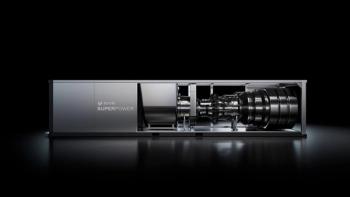
- November/December 2022
- Volume 63
- Issue 5
MYTH: LOGDEC….WHO STOLE MY DAMPING?
ANALYSIS METHODOLOGY IS KEY
A centrifugal compressor rotor is a long beam with impellers on bearings, usually hydrodynamic. Such a system can vibrate when excited at certain frequencies. Mass distribution and shaft stiffness, together with bearing stiffness, define the natural frequencies of the shaft. Vibrational deflections for a given shaft are influenced by bearing stiffness (and support stiffness).
To vibrate, the system must be excited by a fluctuating force. That force can come from rotor unbalance, in which case the frequency of the excitation is dictated by the running speed. It can also come from the bearings or seals in the machine, so-called cross-coupling forces, or from aerodynamic excitation. Some forces depend on the density of the gas compressed, and design tools like swirl brakes can reduce excitation from seals.
A system that can vibrate but has no damping exhibits very large amplitudes when excited at one of its natural frequencies. These large vibration amplitudes cause compressor damage. In modern machines, we measure these amplitudes and shut the machine down if they exceed a threshold. In other words, any compressor rotor is subject to exciting forces, and damping keeps vibrations from becoming excessive. This explains why damping is necessary.
In general, damping comes from bearings — and in some instances, seals. But what does it mean? If we have a shaft vibration as a result of some excitation, and we turn that excitation off, the vibration of the shaft quickly decays if damped. Damping reduces the amplitude of a free vibration. The rate at which the amplitude of a free damped vibration decreases is known as the logarithmic decrement, or logdec, defined as the natural logarithm of the ratio of two successive amplitudes. The larger the logdec, the more damping in our rotor system. Logarithmic damping can be predicted with accuracy, depending on the experience of the designer working with similar geometries.
The key question during compressor design is, “Do we have enough damping?” The answer is contingent on the amount of destabilizing forces on the shaft, summarized as cross coupling. Cross coupling also can be predicted with some accuracy, but it depends on the bearings, compressor seals, and aerodynamic forces from the impeller.
There is general agreement in the industry that logdec is a good stability indicator for rotordynamics. There is even some consensus as to the appropriate limits of stability values. But, as with any complex mechanical simulation, there are multiple methods of calculating these values. Past studies show that different analysts, given the same compressor geometry, arrive at widely varying values for logdec. Thus, a fixed value for an acceptable logdec is meaningless because the answer relies on the way the analysis is performed. Different organizations and consultants use different codes, apply different boundary conditions, and build different models. In addition, testing is difficult on real compressor geometry.
A fixed value for an acceptable logdec ismeaningless because the answer relies on the way the analysis is performed.
With no consensus benchmark or gold standard, and no shared industry database of accepted test results, the experience of the analyst and the availability of test data is crucial. The correct prediction of logdec value can determine the success or failure of a design. Incorrect predictions can lead to design modifications, additional time on the test stand, and expensive project delays.
Once the compressor is built, damping can be measured — indirectly by verifying that the rotor system is stable at the prescribed operating conditions, or directly by using methods such as electromagnetic exciters or Operational Modal Analysis (OMA). Ultimately, an insufficient logdec can be detected by stability issues, such as subsynchronous vibrations.
Given the many influence factors that determine logdec, it can change over the life of the compressor. Any lateral analysis addresses these changes to some extent by considering maximum and minimum bearing clearances or different lube oil temperatures. More important, however, is the fact that destabilizing forces change with the operating conditions of the compressor. Higher pressures, restages and changes to seals and bearings can alter the destabilizing forces.
Even more important, there is no fixed number for logdec that guarantees the absence of stability issues. In other words, if your analysis method shows a logdec greater than 0.1, you’re not automatically fine — and if it’s lower, you’re not always in trouble. Rather, experience based on designing and testing compressors and the use of well-established analysis methods are the keys to success. ■
Klaus Brun is the Director of R&D at Elliott Group. He is also the past Chair of the Board of Directors of the ASME International Gas Turbine Institute and the IGTI Oil & Gas applications committee.
Rainer Kurz is the Manager of Gas Compressor Engineering at Solar Turbines Incorporated in San Diego, CA. He is an ASME Fellow since 2003 and the past chair of the IGTI Oil and Gas Applications Committee.
Any views or opinions presented in this article are solely those of the authors and do not necessarily represent those of Solar Turbines Incorporated, Elliott Group, or any of their affiliates.
Articles in this issue
almost 3 years ago
Avoiding Leakage & Breakagealmost 3 years ago
HYDROGEN TURBINESalmost 3 years ago
POWER RESILIENCEalmost 3 years ago
MITSUBISHI POWERabout 3 years ago
METHANE CAPTUREabout 3 years ago
Show Report: Turbo & Pump Symposia 2022Newsletter
Power your knowledge with the latest in turbine technology, engineering advances, and energy solutions—subscribe to Turbomachinery International today.




